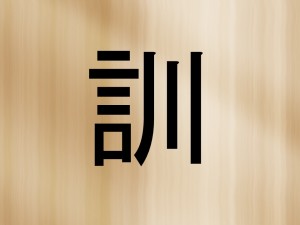In Japanese, the kanji (Chinese character, the hieroglyph-ish stuff) for “instruction” combines two components.
The first component is “words”: that which pours out of a mouth. This is the component, or “radical,” on the left.
The second component is the radical for “river.” In itself, this kanji, on its own, represents a channel carved into the earth (which is what a river is, as there is such a thing as a “dry river”; most, however, have water flowing through these channels.)
 Thus, to the Japanese mind, instruction is using words to carve out a channel into the mind, through which knowledge may flow like water.
Thus, to the Japanese mind, instruction is using words to carve out a channel into the mind, through which knowledge may flow like water.
Other concepts:
Instruction + Display = Directions
Instruction + Raise = Discipline
Instruction + Commandment = Admonition
Instruction + Kneading = Training
This last part uses a kanji for “breaking down” into pieces, selecting the good parts, and “threading” them together into a new whole. This is what U.S. Marine Corps boot camp does to new recruits. It is what a good school would do.
Instruction, per se, is not quite the same as teaching: it is not always necessary to “instruct” someone to teach them. I try to teach with my every word and deed, setting a good example with courtesy and respect for others. I encourage others to do the same.
